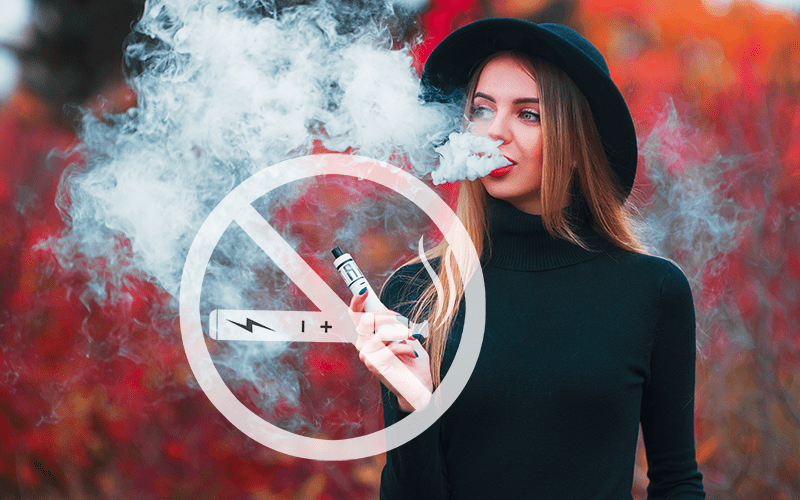By Kiran Gill
2024 UBC PharmD Candidate
Did you know that a single JUUL (electronic cigarette brand) pod can contain the same amount of nicotine as 20 cigarettes? That’s a whole pack of cigarettes!
In the last several years, more people have been turning to vaping to quit their smoking habits and use it as a supposedly safer alternative. Others, particularly in the younger generation, have been enticed by its discreetness and the availability of fancy flavors. Although there are many unknowns about vaping, it is not considered safe and can pose serious health risks.
Understanding Vaping
Vaping involves the inhalation of aerosols or vapours. Although it does not contain tobacco, the nicotine in vaping liquids is often sourced from tobacco plants. The device itself has three main parts: a battery, a metal coil (the heating element), and a liquid mixture. The liquid is heated by direct contact with the coil, turning the liquid into a vapour that can be inhaled.
Risks of Vaping
Metals such as nickel and chromium found in the metal coil are considered carcinogens when inhaled. Certain flavorings can also facilitate the transport of these metals directly into our bloodstream, cells, and lungs. Ultimately, these harmful chemicals and carcinogens lead to detrimental effects on our health.
Switching to vaping as a method to quit smoking is not uncommon. Although vaping nicotine is generally considered less harmful than continuing to smoke, it is important to remember that both traditional cigarettes and e-cigarettes contain nicotine, which fosters physical dependence and addiction. Interestingly, vaping products have the potential to deliver HIGHER doses of nicotine at a FASTER rate than traditional cigarettes, leading to an increased risk of addiction.
NRT and Vaping Cessation
There are many reasons to consider quitting vaping. Aside from the health risks, vaping can also affect how you think and feel, and it may interfere with your relationships with family and friends. Plus, it’s not cheap. Understanding why you want to quit can serve as motivation to seek help and stay focused on your goals.
Nicotine replacement therapy (NRT) is considered an effective strategy for smoking and vaping cessation. By providing a controlled and gradual approach to weaning off nicotine, it minimizes withdrawal symptoms while reducing the urge to smoke or vape. In British Columbia, Pharmacare (the provincial prescription drug program) plays a pivotal role in facilitating access to NRT for eligible residents. Under Pharmacare coverage, certain forms of NRT may be fully covered, making these cessation aids more accessible and affordable for those seeking to quit tobacco or vaping products.
NRT OPTIONS
- Patches: worn on the skin to deliver a consistent and slow release of nicotine throughout the day and curb cravings
- Gum: allows users to chew and absorb nicotine as an on-demand approach to manage cravings
- Lozenges: dissolve in the mouth to gradually release nicotine
- Nasal spray: fast-acting spray that delivers quick doses of nicotine to replicate rapid effects of smoking or vaping.
- Inhalers: allows users to mimic the hand-to-mouth action of smoking or vaping to inhale vaporized nicotine
Often, a combination of products is used to address the baseline need for nicotine and provide immediate relief of cravings. This is usually dependent on the amount of nicotine in the vaping product and how often an individual vapes.
Remember, quitting smoking or vaping is not “one size fits all.” Your journey will be unique, and support is available. Nicotine replacement therapy is a tangible pathway to overcome nicotine addiction.
Consult with our pharmacy team for personalized advice tailored to your specific needs and goals.
